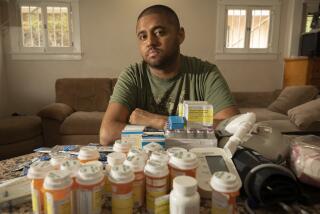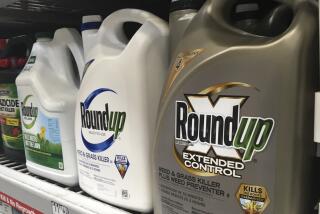Cancer Patient Gets $1.25 Million in Asbestos Case
A Los Angeles jury has awarded a former Pearl Harbor pipe fitter $1.25 million for a deadly form of lung cancer he allegedly contracted from exposure to asbestos pipe insulation more than 40 years ago.
The verdict, which included $500,000 in punitive damages, was one of the few punitive damage awards ever assessed against an asbestos manufacturer in California, and the first in the state to be assessed against Raymark Industries Inc., a major manufacturer of asbestos products, according to lawyers in the case.
In a three-week trial before Superior Court Judge Henry P. Nelson that concluded Monday, lawyers for George Q. Lai, now an Anaheim retiree, presented evidence that Raymark executives knew as early as 1935 about the dangers of asbestos but sought to quell publicity about the issue.
Much of the medical data about asbestos was already available, they argued, when Lai was repairing pipes on ships at Pearl Harbor in Hawaii, regularly coming into contact with the asbestos insulation that jacketed the pipes.
Disease Discovered
Lai left the civilian Navy job in 1953 and went to work as a draftsman for Bechtel Corp. But it wasn’t until 1984, when he and his wife decided to embark on a long-planned trip around the world, that Lai learned he had contracted mesothelioma, a form of lung cancer generally linked to asbestos, and for which there is no known cure.
“They got as far as Switzerland, and the doctor said you better get home as soon as possible,” said Helen Eisenstein, one of the lawyers in the case.
“I would say that I have about 10% of my body strength now, that’s all I have left,” Lai, 64, said in an interview Tuesday. “I can’t lift. I can’t walk. My lungs are shrunk to less than 50% capacity. I have pain that’s beyond anybody’s ability to understand.”
According to expert testimony presented in the case, Lai should have had a life expectancy of 14.7 more years. Now, he has less than a year.
Earlier Settlement
Lai had already reached an undisclosed settlement with several other asbestos manufacturers, an amount that will be subtracted from the $1.25 million the jury awarded him this week.
Raymark’s lawyer did not return repeated phone calls, and a company spokesman could not be reached for comment. But the company presented expert testimony that raised questions about whether Lai had mesothelioma or another form of cancer that is not attributable to asbestos.
The company also argued that Lai’s cancer may have been caused by other asbestos products, that Raymark’s products were not defective, and even if they were, the company had no knowledge in the years when Lai was exposed to them that they could cause cancer.
Crucial Evidence
Aaron Simon, the lawyer who represented Lai at trial, said the most crucial evidence was a series of correspondences during the 1930s involving Sumner Simpson, the first president of Raybestos-Manhattan Co., predecessor of Raymark, establishing that Raymark and other asbestos company officials were well aware, as early as 1935, that asbestos had been linked to asbestosis, one of several diseases linked to exposure.
The 1930s-era documents--uncovered in the late 1970s and introduced with increasing frequency in asbestos cases around the nation--establish that Raymark’s former executives sought to alter studies on the dangers of asbestos to make them appear more favorable.
The documents also show that Raymark discouraged release of X-rays of the company’s own employees for fear that they would be “given to shyster lawyers and doctors so as to be the subject of suits.” The papers also show that the firm attempted to persuade an American trade publication not to publish English studies documenting the hazards of asbestos.
“I think the significance of the punitive damage award is the message to the manufacturer--you can’t get away with this,” Simon said.
More to Read
Inside the business of entertainment
The Wide Shot brings you news, analysis and insights on everything from streaming wars to production — and what it all means for the future.
You may occasionally receive promotional content from the Los Angeles Times.










